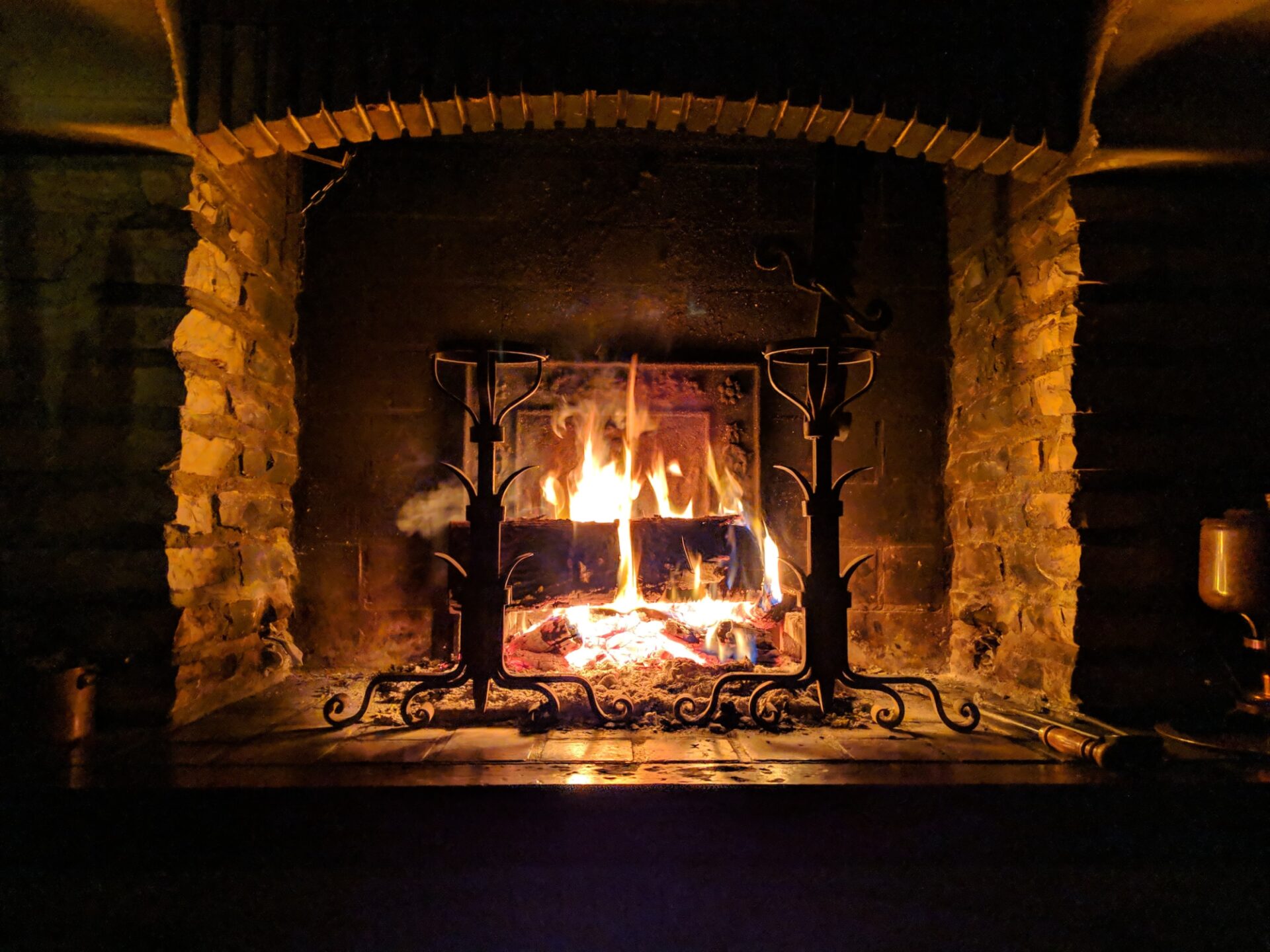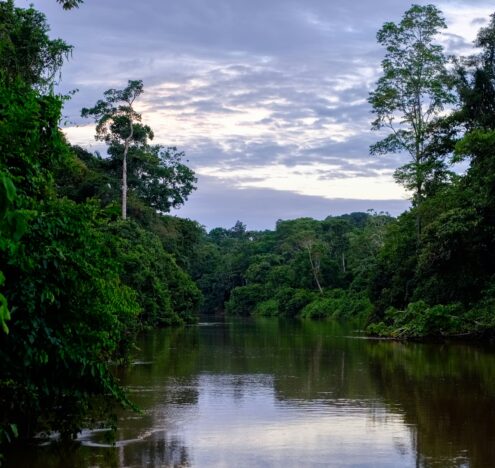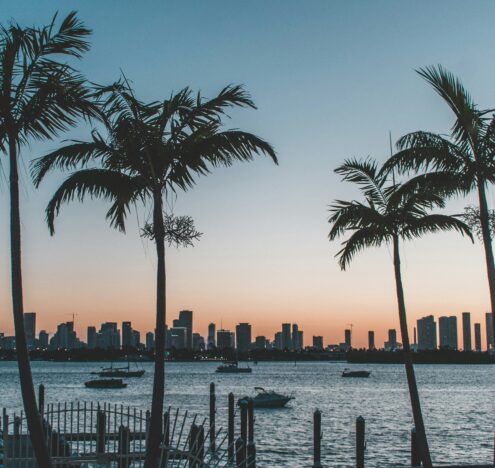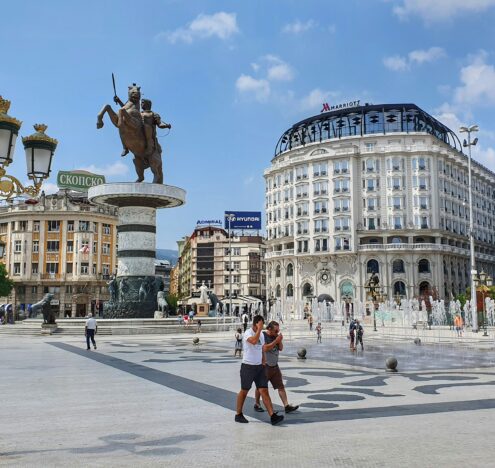“The Changing of a Continent” is a column by journalist Kenneth R. Rosen that focuses on the US trans-Atlantic relationship and Europe’s future.
Someone recently asked me to think of a place I had been to or one I imagined where I might find peace. It is not the anechoic chamber at Orfield Laboratories in Minnesota where the silence can adapt your ears to the intonations of your heart, lungs, and stomach. Tranquility, for me, is rarely found in the engineered but rather in the natural. So in my darkest moments, I mentally reroute myself to a place I’ve read about, called the “one square inch of silence.”
Deep in the Hoh Rai Forest of Olympic National Park in Washington State, there is what some may consider the quietest place in the United States. No planes route over a square inch there. No roads divide the park. The soundscape remains for the fauna, fawns, and fans of a reprieve apart from our high-decibel lives.
Deforestation can be attributed to many things, such as mining projects, industrial agriculture, and the EU’s use of wood as fuel.
The silence found in one particular spot within the forest is impossible to achieve during the daily thrum of our lives. The doorbell, the dishwasher, the computer clacking (at this very moment, I’m blaring alternative rock into my headphones) and clicking, or the neighbor dragging some god-knows-what piece of furniture across their floor at midnight. “My father used to say, ‘Quiet? That’s so highbrow. Quiet is so trivial. Someday we can fix the noise pollution, and it will be quiet,’” Gordon Hempton, the founder of One Square Inch, what he calls a sanctuary for silence, said in an interview in 2020.
Noise — pathological in its origin from the Latin root for “seasickness” — is not the only pollution faced globally today. And bio-diverse swaths of undeveloped forest brimming with trees, once a harbinger of preservation, are disappearing. Deforestation can be attributed to many things: mining projects or infrastructure construction, industrial agriculture, or extreme weather events caused by climate change. One of the leading causes of the loss of these precious silent spaces is timber logging. And the European Union has leaned into the degrading of forests for fuel-wood heavily.
A LEADING CAUSE OF DEFORESTATION
Each year, some 380,000 hectares of forest are felled to meet the global demand not only for IKEA furniture but for chimneys and energy grids, accounting for more than half of all forest degradation. It’s not hard to think of wood as a renewable, net-zero energy source. Cut down a tree, burn it, and the greenhouse gas emissions from that process would be offset by the growth of new trees. This logic provides a simple loophole for countries, especially in the EU, who are seeking to meet carbon reduction deadlines. Wood-fired power plants count toward clean-energy targets.
I mention the United States because between southern Virginia and the Texas Gulf Coast, there are at least 23 facilities processing wood pellets exported to Europe, the world’s greatest consumer of wood pellets with nearly 20 million tones annually, according to Bioenergy Europe, a not-for-profit based in Brussels. Before moving to an industrial city in Italy’s north, I lived in a small village in the Dolomite mountains where each winter, to heat the home, we cut down trees to feed the stufa, a wood-burning ceramic-tiled furnace in the kitchen. Eventually, my primary objections were the dust and household pollution. I was one of the 2.4 billion people cooking and heating my house with solid fuels.
My real objection should have been that wood burning, per unit of energy, according to scientists, releases more greenhouse gas emissions than gas, oil, or coal.
European lawmakers voted in September 2022 to begin phasing out wood-energy subsidies. The shift came after years of lobbying by scientists and the realization, following a release of government data on the industry, that carbon dioxide from burning solid fuels was more costly to the climate than fossil fuels. Nevertheless, the Finnish minister for agriculture and forestry tweeted full support for “forest energy.” “We need more domestic renewable energy and self sufficiency,” Antti Kurvinen wrote.
A FUTURE OF OBFUSCATION
The demand for alternative energy amid a shortage thanks to Russia’s invasion of Ukraine is growing. In Europe especially, half the wood harvested is burned. It is also often harvested illegally or with very little accountability.
The bloc has a backlog (pun intended) of sawdust waste and trees felled for fire prevention that is eligible for subsidies through 2024, at the earliest. In light of last month’s vote in the European Parliament, the Bioenergy Europe group still welcomes wood power as a clean energy goal. Some of its members include pellet (little shoots of sawdust used in heaters used as a safer alternative to fireplaces or, in my case, stufas) manufacturers.
These moves are in direct opposition to the flowery language and good intentions espoused at the 2022 UN Climate Change Conference or COP27 gathering earlier this month, at which the UN Secretary-General António Guterres said, “We are on a highway to climate hell” and current climate reform dawdling “is an unacceptable, outrageous, and self-defeating.” Guterres noted nations shouldn’t put the issue “on the back burner.”
Fiery language, indeed.
Yet, for all the talk of watching our planet burn, it’s ironic to see governments willing to still light a torch.
Kenneth R. Rosen is a columnist at Inkstick and an independent journalist based in Italy.





















